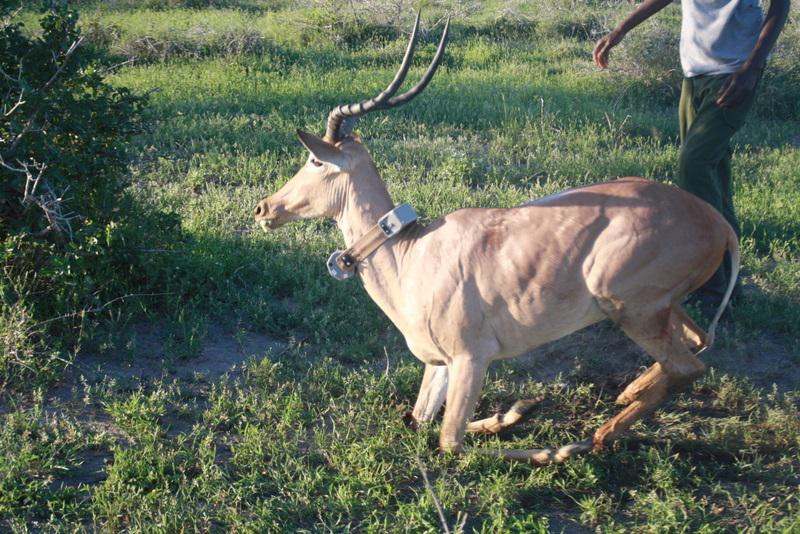Abdullahi Hussein Ali
Other projects
27 Jan 2012
Role of Predation and Livestock Grazing as Factors Underlying Hirola Declines in Ijara, Kenya
12 Mar 2014
Understanding Resource Selection and Movements of Hirola to Inform Future Reintroductions
26 Nov 2015
Range Restoration for the World’s Most Endangered Antelope and Local Livelihood Improvements in Southeastern Kenya
I will investigate how humans and their livestock alter hirola demography, resource selection, and spatial distribution and involve local communities through education and outreach.

Collared hirola.
The hirola (Beatragus hunteri) is the most endangered African antelope, and is one of the most critically-endangered species of mammals worldwide (IUCN, 1996). Indeed, the hirola was recently identified by the EDGE (Evolutionary Distinct and Globally Endangered; Isaac et al. 2007) project as one of the top-10 focal species at risk of imminent extinction, and thus in dire need of intensified conservation efforts in the immediate future. Historically, hirola probably were rare within a restricted geographic range, being confined between the lower Tana River in eastern Kenya and the River Juba in south-western Somalia (Bunderson 1972, Kingdon, 1982). Although hirola have been legally protected in Kenya and Somalia since the 1970s, their numbers have declined by more than 80% since 1976 (Ottichilo et al. 1995; Magin, 1996; Butynski, 2000).
Unlike many globally-endangered species, the historic range of hirola occurs entirely outside of formally-protected areas (e.g., national parks and reserves), and their fate hinges on an ability to understand and manage jointly for conservation and livestock production on community lands. While information critical to the conservation of hirola has been gathered over the past decade (e.g., Butynski, 2000), the few ecological studies conducted in the region have either targeted hirola in isolation, or have been restricted to opportunistic sample counts through aerial surveys (Dahiye and Aman, 2002; Andanje, 2000; Dahiye, 1999; Department of Resource Survey and Remote Sensing (DRSRS), 1997; Magin, 1996; Ottichilo et al. 1995).
My study will therefore:
1) uncover the mechanisms underlying hirola declines;
2) formulate management strategies that integrate hirola conservation with the livelihoods of local pastoral communities. Specifically, my research will investigate the impact of livestock, settlements, and watering points on hirola population dynamics and habitat selection.
In so doing, I will integrate population estimation (via ground and aerial surveys) of both domestic and wild ungulates, employing radio-telemetry and spatial point-pattern analyses. Further, I will work to promote capacity building and make management recommendations for the long-term compatibility of wildlife, livestock, and pastoralists in northeastern Kenya. My results will provide sorely-needed information on the basic ecology and natural history of hirola, and will form the basis of conservation and monitoring of this critically-endangered species in its native range in North-eastern Africa.